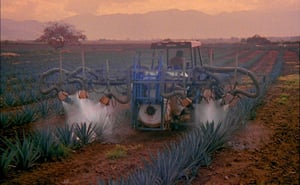As the new technologies that focus on automation are incorporated into our daily lives, it is only normal that some questions arise regarding which human activities can or can't be replaced by a machine. Well, this also applies to the agricultural area. Discover how automation can be applied in the field.
Automation Opportunities at the Agave Field
Reality shows that automation will eliminate very few occupations as a whole in the short term. Depending on the type of work, automation could affect almost every job in a greater or lesser degree.
Automation could be carried out by means of the adoption of current technologies, and it is said that it is potentially transforming traditional sectors such as the health and finance areas, since they have a constant demand for innovations. The field of agro-industry does not escape this trend and has adopted strategies that have a direct impact on:
- Decrease in costs
- Competitivity
Its main objectives are:
- Solve the staff shortage that there is (less people willing to work on the fields)
- Have a direct impact on input savings, by which I mean agrochemicals for the land and fuels for the equipment.
- Last but not least, to increase the productivity while overcoming the shortage of resources (including hydraulic resources)
Automation of Mechanical Labor in the Field
In order to make the impact that automation has had on the field more visible, we will divide the agriculture activities into two main groups:
- Activities with a high potential of becoming automated, such as recollection and data processing
- Activities with a medium automation potential, such as the ones that imply a huge amount of human physical labor or the ones related to the functioning of the equipment in unpredictable environments (such as the conditions of the land, of the weather, or the overall environment per se).
We can't ignore the costs involved in developing any kind of automation, for any area or activity. Which is why, we must be aware that we would first go from one stage to another; from research, to deployment, to the implementing of software and hardware for each activity. It will all have a cost, and explaining this long-term-work can become a decisive argument for deciding on its implementation. It could also play for or against automation, though.
Therefore, we can cut to the chase by saying that in the field, the possibility of automation is viable, however, just because an activity can be automated it does not mean that it will be.
Technologies in Agriculture
We have mentioned in previous posts that there are three specific issues which are key when it comes to automation in the field - more specifically, smart agriculture. I refer to the use of the following technologies:
- Use of a Digital Geographic Information System (GIS)
- Use of drones in agriculture
- Use of driver-less tractors
Both driverless tractors and drones require the use of GIS for its application and operation. Currently, they are both increasingly available and in constant development. They together become trend indicators for the achievement of the long-awaited automation in agriculture in the following years. The main challenge will be to connect all of the elements together.
If you have any questions please feel free to contact me, and do not miss my future blog-posts! You can also come to Casa Sauza yourself and visit both our agave fields as well as our factory.
.png?width=50&height=50&name=10.CS-Redondo%20(1).png)

